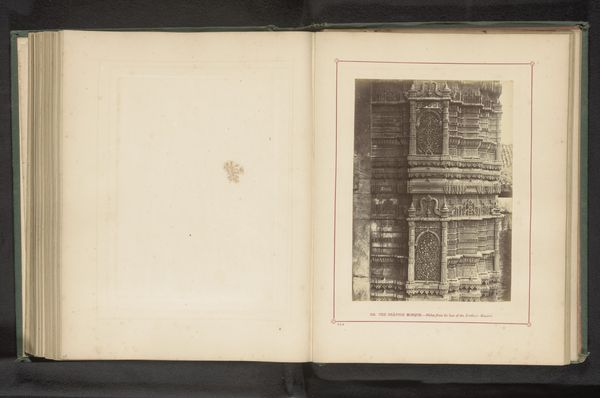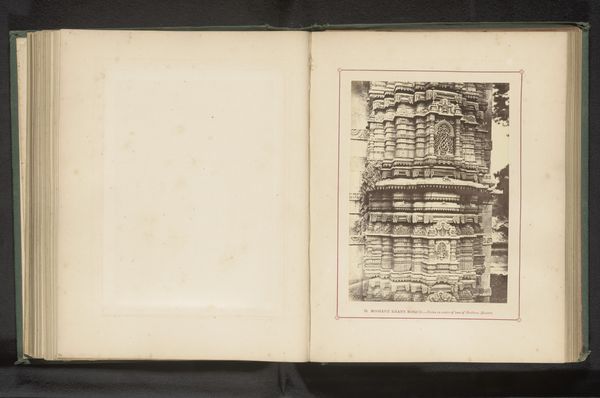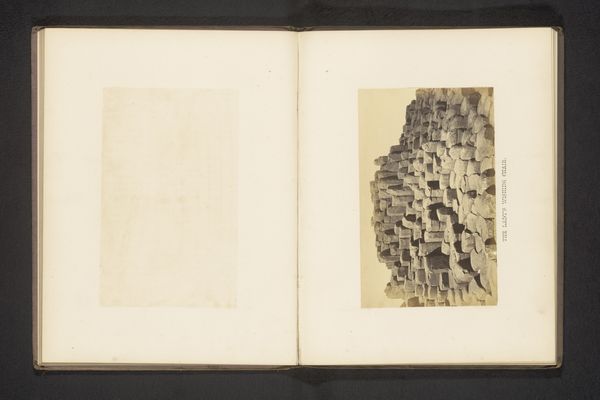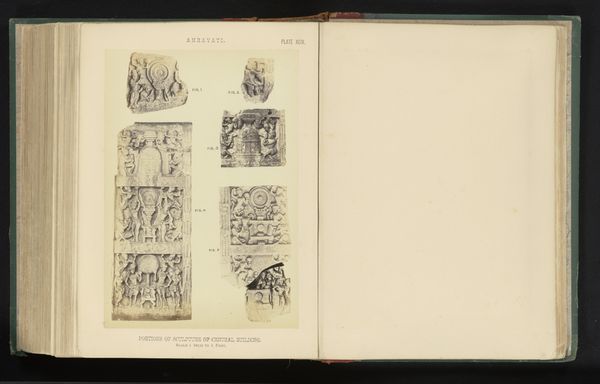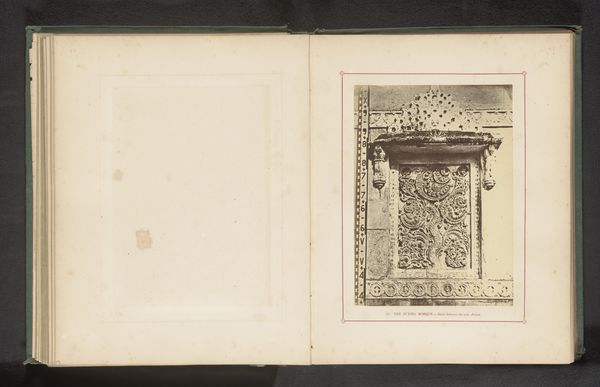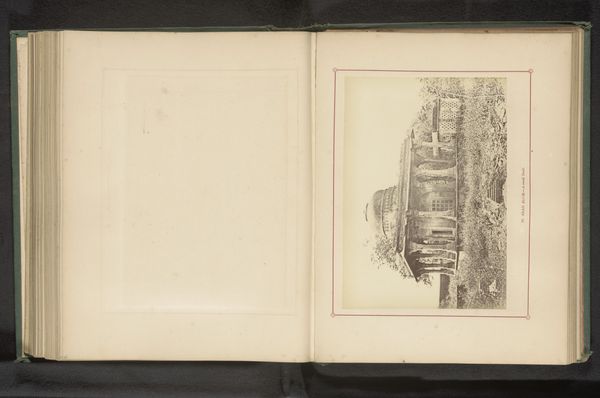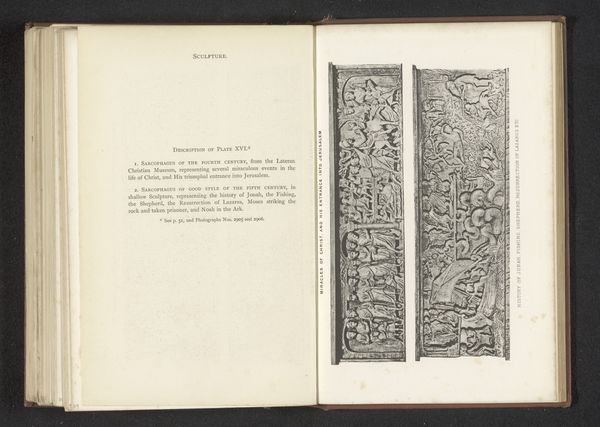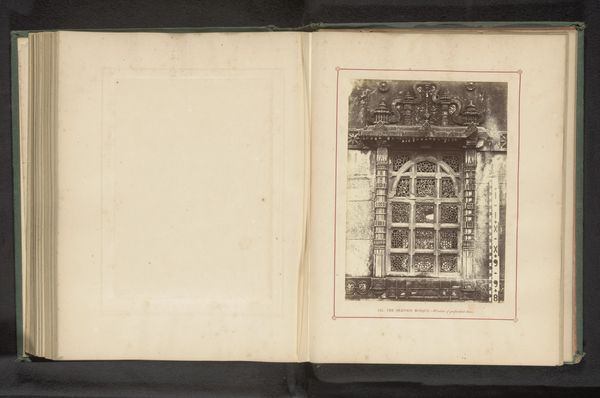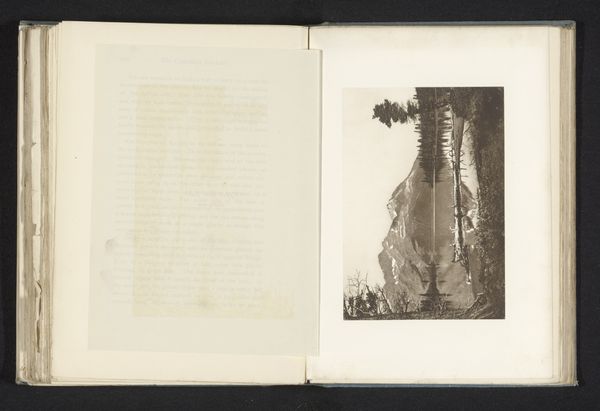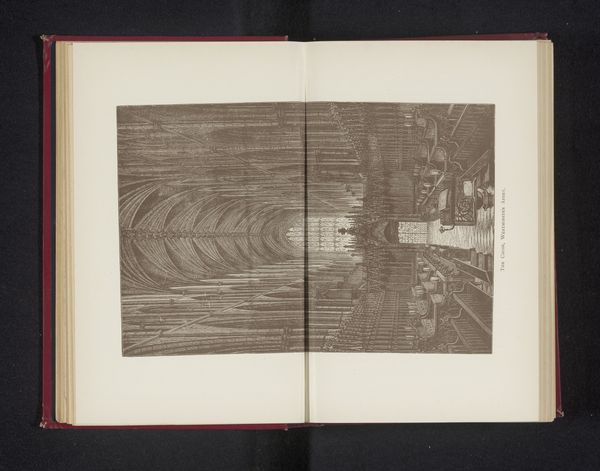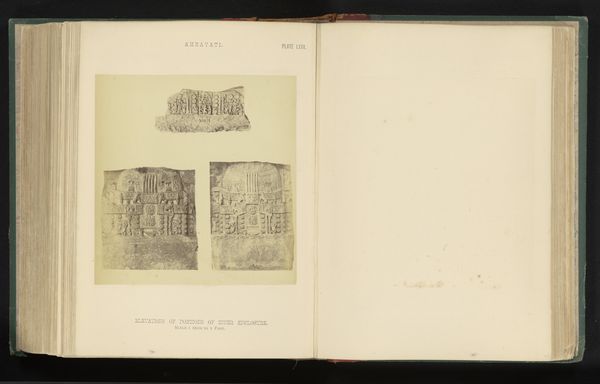
print, photography, architecture
# print
#
landscape
#
photography
#
ancient-mediterranean
#
islamic-art
#
architecture
Dimensions: height 201 mm, width 149 mm
Copyright: Rijks Museum: Open Domain
Editor: So here we have a photographic print, "Decoration of a Minaret of the Muhafiz Khan Mosque in Ahmedabad," created sometime before 1866. The detail is just incredible; you can really see the texture and labor that went into creating that minaret. What do you see when you look at this, beyond just a photograph? Curator: For me, the photograph isn't simply a record; it's evidence of specific processes – the architectural labor involved in crafting the minaret itself, and the photographer's labor in capturing and producing this image. Consider the access to materials in 19th-century Ahmedabad: who controlled the means to both build such a structure and then disseminate its image through photography? Editor: That’s a really interesting point, thinking about access and control. It’s easy to just see the beautiful details without thinking about the broader context. So, this wasn't just about aesthetics, was it? Curator: Exactly! We have to consider the social context. The creation of this mosque, and its subsequent documentation, tells us about patronage, religious power, and the development of photographic technology as a tool of documentation and, potentially, control. How does the act of photographing a specific architectural detail elevate it or perhaps even commodify it? What kind of viewership was intended for this print? Editor: So, by focusing on materials – the stone, the photographic chemicals, even the paper – we get a richer understanding of the people and power structures involved in its creation? Curator: Precisely. It forces us to move beyond aesthetic appreciation to consider the human element, the labour, and the social forces that shaped both the mosque and its representation. Editor: That definitely gives me a lot to think about – it's more than just a pretty picture! Thank you. Curator: My pleasure. Remember, everything we see has a material history, and unpacking that history unlocks new insights.
Comments
No comments
Be the first to comment and join the conversation on the ultimate creative platform.

